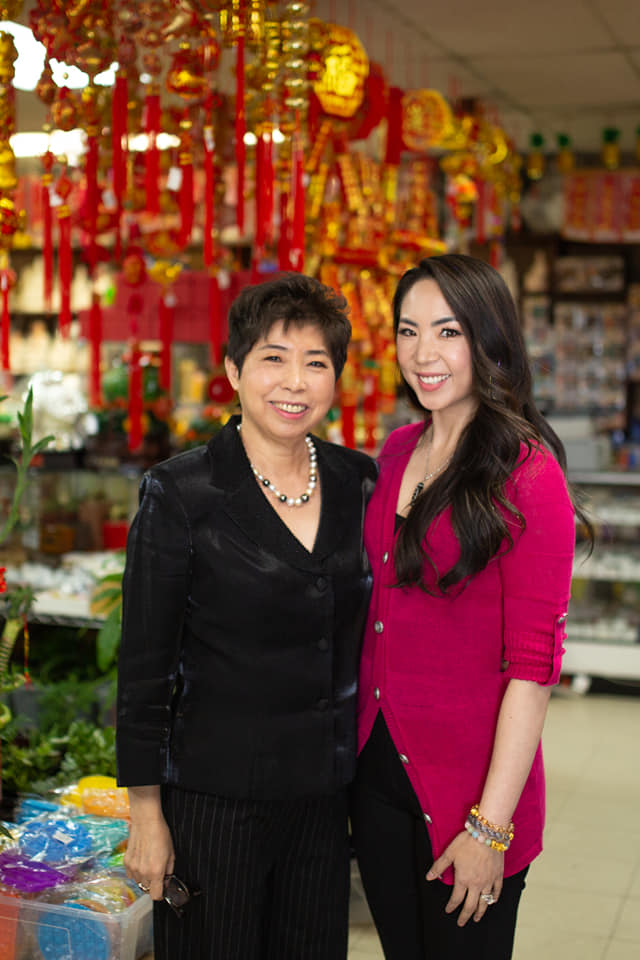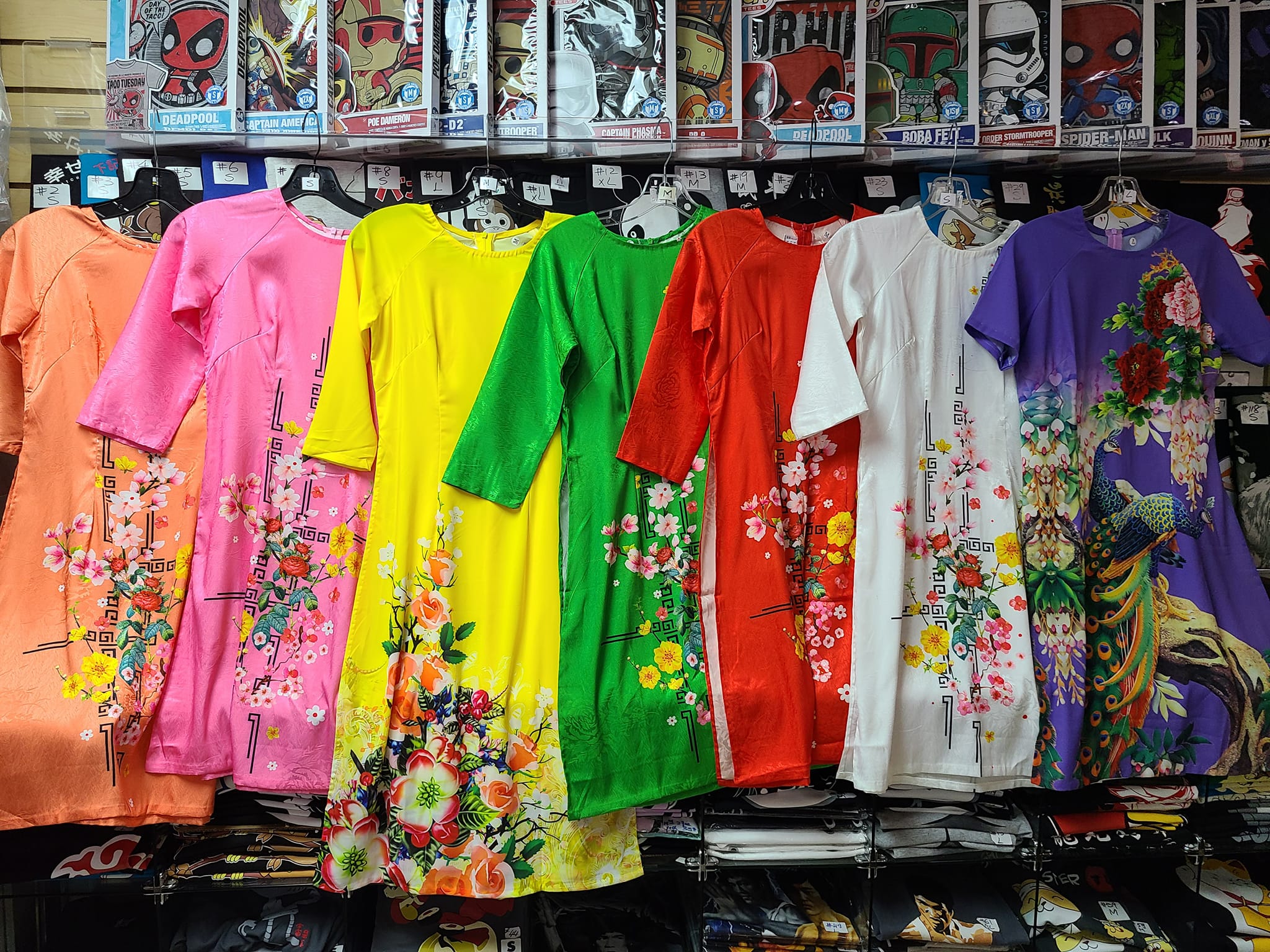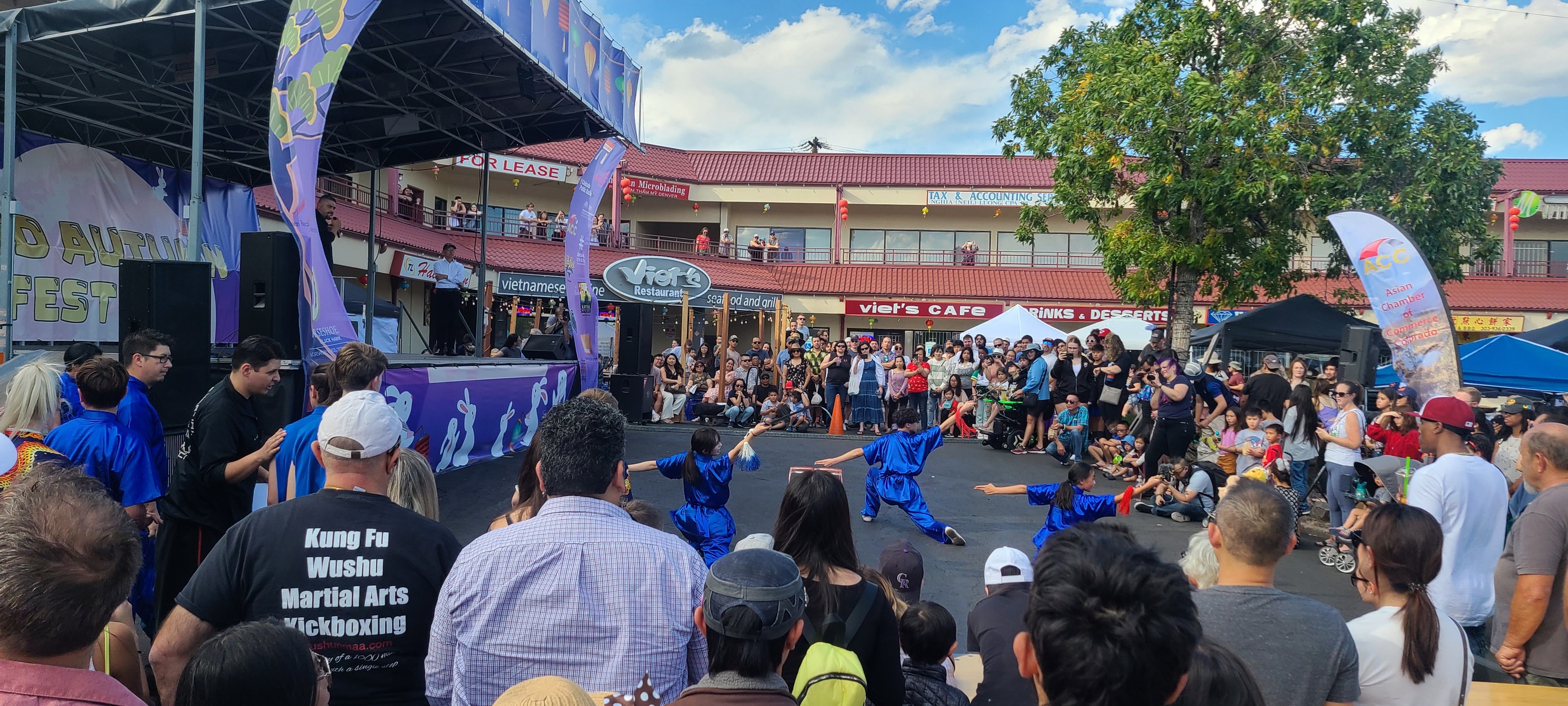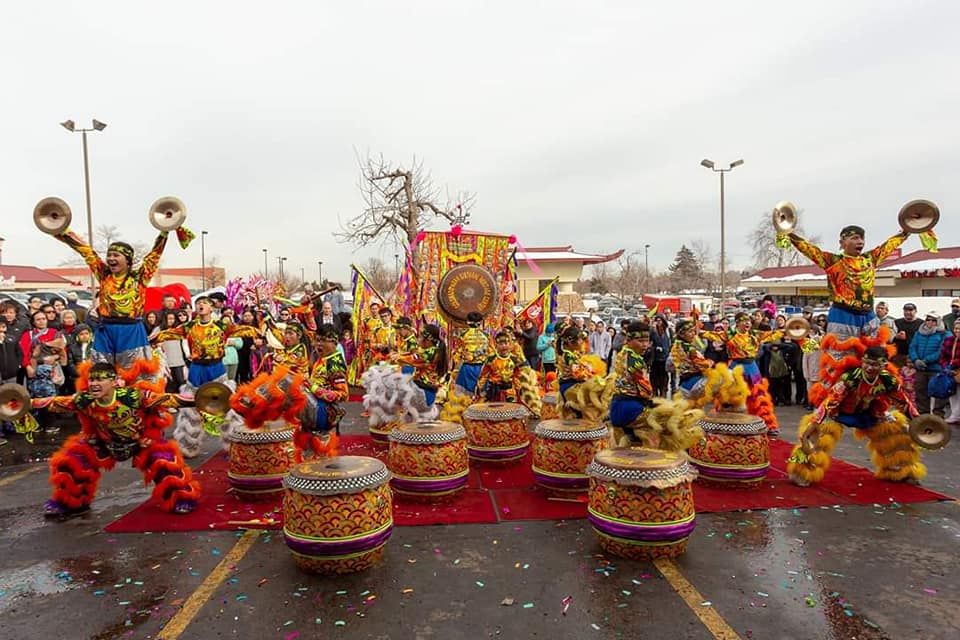
Story
A Season of Celebration and Commemoration at the Far East Center
2024 started off with an exciting addition to the Colorado State Register of Historic Properties—the iconic shopping plaza in southwest Denver known as the Far East Center.
Denver’s Far East Center, located near the intersection of Federal Boulevard and Alameda Avenue, has served as a cultural hub for Denver’s Asian American, Native Hawaiian, and Pacific Islander, or AANHPI, community for more than thirty years.
And it all started with the Luong family.
The Luong Family
They were among the nearly two million Vietnamese refugees forced to flee the country at the end of the Vietnam War. After two decades of brutal warfare, the Communists in North Vietnam captured the southern capital of Saigon in April 1975. Families were faced with the impossible decision of leaving everything behind or staying despite reports of atrocities and violent crimes against the South Vietnamese.
Many South Vietnamese families with connections to the military fled via aircraft. Others boarded overcrowded naval vessels and cargo ships without seating, food, or water. They faced attacks from pirates and often lost everything. Many did not survive the voyage and countless families were separated during their escape.
Approximately 130,000 refugees arrived in the United States in 1975. Hundreds of thousands continued to arrive throughout the early 1990s. The United States established resettlement centers in California, Pennsylvania, and Arkansas where some Vietnamese refugees lived in tents for months. Nonprofit and faith-based organizations, such as Lutheran Social Services and the Catholic Resettlement Office, provided aid in the resettlement process and matched refugee families with sponsor families. As Vietnamese refugees settled in communities across the country, violently separated from everything they had ever known, they were met with a range of receptions from acceptance to discrimination and outright harassment.
For nineteen members of the Luong family, the exodus happened with little notice. They packed what they could into backpacks, boarded aircraft, and fled Vietnam for their lives. The family landed in Guam where they spent several days in a refugee camp and were robbed of everything. Eventually, they made it to the United States and to the home of a great aunt and uncle in Denver, joining the 5,800 Vietnamese refugees who would arrive in the state by 1990.
The Far East Center
With their lives turned upside down, the family was forced to live in their great uncle’s basement while they searched for work and new homes. Several members of the family found jobs at various King Soopers locations, including brothers Thanh Vinh Luong (“Tom”), Nghia Vinh Luong (“Neil”), and Thong Vinh Luong.
The Luong family worked and saved to rebuild their lives. In 1977, Thong, Thanh, and Nghia Luong opened one of the first Vietnamese grocery stores in Denver called Thai Binh Oriental Foods. Wanting to recreate a piece of home for immigrants and refugees, the brothers would regularly drive to California to acquire the East Asian foods that they were missing in Colorado. Their store was so successful that the brothers soon opened a second location near 1st and Federal, an area that was becoming a popular neighborhood for Vietnamese refugees in need of affordable housing.
Thanh Luong married his wife Phung (“Fawn”) in 1980. Phung’s family of ten had fled Vietnam in 1979 on a ship with 3,500 people aboard. Phung’s family lost all of their belongings during the voyage. When the ship arrived in Hong Kong, the passengers were denied entry. They remained at port for a month while receiving essential supplies via helicopter. They were eventually placed in a refugee camp for eight months until the Luong family in Denver became the sponsors for Phung and her family to immigrate to the United States.
After Thanh and Phung married, she worked at the Luong family’s supermarket but hoped to have her own store. She opened the first Asian video store in Denver using connections from her time in Hong Kong to source kung fu movies and Asian dramas. Over time, Phung grew the store into a gift shop.
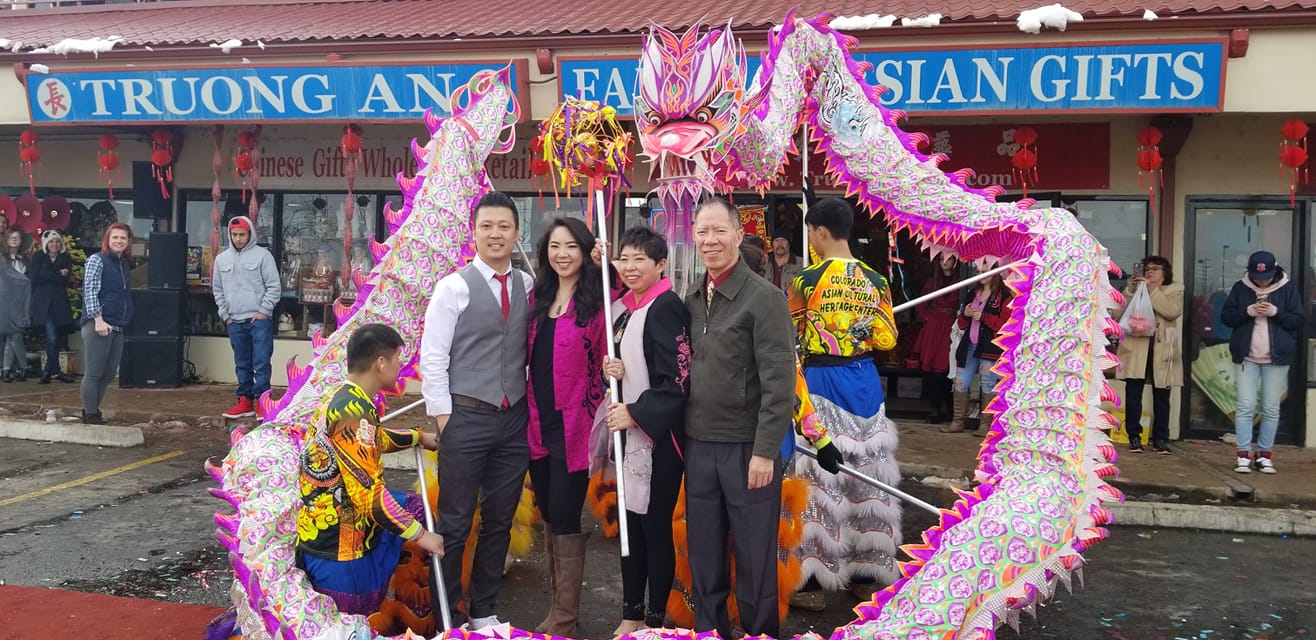
The Luong family in front of Truong An Gifts. Pictured left to right: Michael Ye, Mimi Luong, Phung Luong, and Thanh Luong.
By the early 1980s, several members of the Luong family owned businesses in Denver but they were so busy that they barely got to see one another. Looking for a way to all be together, they drafted a proposal to build a plaza that would serve as a hub for the Asian community where people from all walks of life could eat, shop, and play.
In 1986, Thong, Thanh, and Nghia Luong partnered with a non-family member and purchased property on South Federal Boulevard using financing from a bank and the Denver Economic Development Agency. The family worked with local architect John Eatwell (a neighbor of Thong and his wife Mai) to design what would become the Far East Center.
The design included two partially stuccoed buildings with multiple retail units surrounding a main parking lot. The larger of the two buildings is an L-shaped, two-story building with an open walkway on the second floor. On the south side of the property, there is a rectangular one-story building. Both buildings were designed with flat roofs hidden behind large, red-tiled awnings to evoke the architecture of East Asia. Paper lanterns and signage in English, Vietnamese, and Chinese decorate many of the storefronts.
The complex featured two Guardian Lion sculptures between the parking lot and the buildings. These sculptures (also known as Foo Dogs) are meant to provide protection and have been prevalent in East Asian architecture for centuries. They often appear in a pair, one male and one female—although the original female Guardian Lion at the Far East Center was damaged by a car and is no longer present at the complex.
The grand entrance was also decorated with a Pagoda-style gate that reads “Far East Center” to symbolize good luck. Fittingly, the Far East Center had filled every space with a tenant—refugees and small business owners from Vietnam, Laos, Cambodia, and China—before construction even began.
The Luong family opened the Far East Center on August 26, 1988. The first businesses to open in 1988 included: the Luong family grocery, Nghia Luong’s tax service, and Thanh and Phung’s store Truong An Gifts, which means “peace and longevity” in Vietnamese. This gift shop remains open today and is managed by Thanh, Phung, their daughter Mimi, and her husband Michael Ye.
“Growing up, the Far East Center was like a playground for my cousins and I after school,” Mimi Luong recalls fondly. “If we were hungry we could stop at our aunt’s restaurant, if we were tired we could nap in our uncle’s office…the plaza became our second home and the other tenants became our unofficial aunties and uncles.”
The Little Saigon Memory Project
The Center was recently added to the Colorado State Register of Historic Properties in recognition of the critical role that the site has played over the past three decades to support, elevate, and celebrate the role of the AANHPI community in Colorado. The Far East Center serves as the main commercial complex for the neighborhood known as Little Saigon.
In major cities across the United States, the neighborhoods where Vietnamese immigrants gathered together became known as Little Saigon. Often this name evoked a sense of pride as these families worked tirelessly to rebuild their lives: establishing their own businesses, raising their families, and sharing their culture and community with others.
Denver’s Little Saigon can be found along Federal Boulevard between Mississippi and Alameda Avenues. Beginning in the 1980s as a safe haven for refugees, the area has grown into a thriving cultural enclave for the Southeast Asian community. Little Saigon has become not only a vibrant business district offering Asian goods and cuisine, but also an important part of Denver’s cultural landscape that evokes tradition and resilience.
The Little Saigon Memory Project is a collaboration between History Colorado’s Museum of Memory Initiative and Colorado Asian Pacific United (CAPU). Through the collection of oral histories and community collective memory workshops, it celebrates the resilience, traditions, and vibrant cultures that shape this community. The project aims to honor and share these invaluable stories through a documentary, and various cultural expressions. By documenting the diverse cultural heritage within Denver's Asian American communities, the project partners strive to highlight that Asian American history is an integral part of American history. To learn more about this memory project, click here.
The Far East Center Today
The Far East Center is still filled with thriving local businesses rooted in the East Asian community including supermarkets, restaurants, gift stores, jewelry stores, salons, financial services, and more. The plaza attracts a wide array of loyal customers from all backgrounds, many of whom know each other and the store owners by name.
“We have countless shoppers who come to us and say, ‘My grandparents used to bring me here and now I bring my kids’,” Mimi notes. “Many of my own family members are retired but they still come into the store daily because seeing the community brings them peace and happiness.”
The Far East Center also serves as an important cultural event center where large-scale celebrations are held annually. Events include the Mid-Autumn Festival, Trunk or Treat, and the Lunar New Year celebration.
“These events create a space where families feel they can embrace their identity,” says Mimi. “Parents are able to pass down traditions and many children come in cultural clothing.”
The Mid-Autumn Festival celebrates the harvest moon. Families gather together for traditions including eating moon cakes and lighting lanterns. The Far East Center’s Mid-Autumn Festival is an annual celebration inspired by Asian cultures, and invites anyone to come and experience some of the traditions and dishes families like the Luongs fought so hard to preserve here in Colorado.
When asked what she hopes to see in the future for the Far East Center, Mimi says, “As kids you don’t realize the hard work, sweat, and tears that go into creating a community space like this….Now that I work at the family business, I get to hear these incredible stories and I want to share with them with the community. I hope to be able to leave a lasting impact for the community like my parents did, that my kids will be able to share.”

